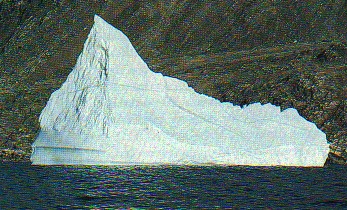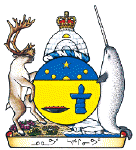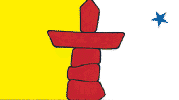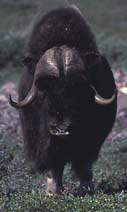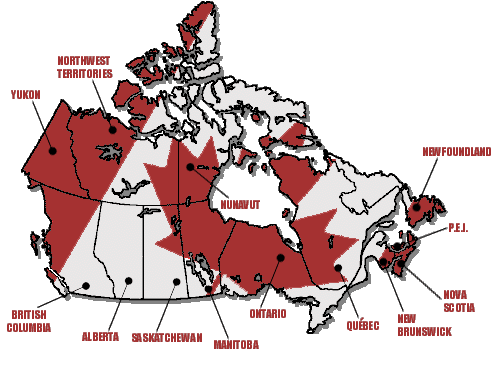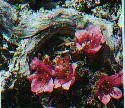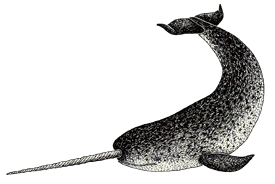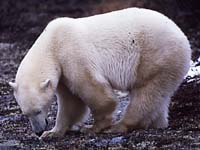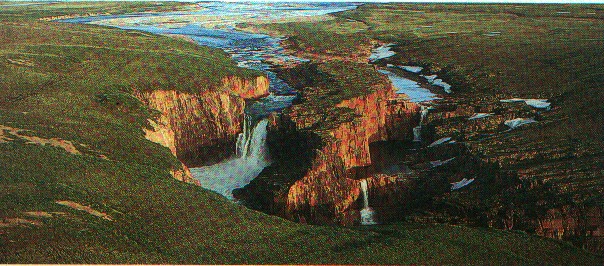|
Nunavut
Basic Information Nunavut is a new territory that was once part of the Northwest Territory. On July 9, 1993 the new territory came to be. Iqaluit is the capital. The people who live in Nunavut are called Inuit. They named their territory Nunavut because it meant "Our land." Nunavut is shaped something like an a "inukshuk" or a pile of stones stacked to look like a human. Inukshuks were built to guide people across the land. The land in Nunavut is buried under ice and snow. Even the sea is frozen. Nunavut makes up to 1/5 of Canada. Nunavut is the biggest territory and province in Canada. To the west of Nunavut lies the Northwest territories. To the east lies Quebec. To the north lies the Arctic Ocean. To the south lies Manitoba. Nunavut is divided into two main regions. The regions are called Artic Island and Artic Mainland. |
|
Plants and Animals
Nunavut is above the tree line, so that's why no trees grow there. Mostly the temperatures are 0°C or below. A place called "tundra" is a treeless area and it is frozen solid. Only the top layer of Nunavut soil thaws and many plants can grow there. Many flowers still grow even though the summer lasts only for 6 weeks. Plants like . . .
Many tundra plants are able to survive in Nunavut.
There are only a few types of animals in Nunavut. The Inuit need animals for food and clothing.
Snowy owls, gyrfalcons and ravens stay in Nunavut all year. Golden plovers and arctic terns come back to the north each year to raise their young along with many other kinds of birds. Kittiwakes, fulmars and murex nest by the thousands on high cliffs and rocky islands found in the territory of Nunavut.
|
Important
Places
There are only 22,000 people
living in Nunavut. 80 percent of the
people
are
Inuit. Throughout the territory of Nunavut there
are twenty-eight insolated communities. The communities vary
in size, for example Iqaluit has 3 552 people while
Umingmaktok only has 53 people. Some families choose to live
on the land in camps far away from settlements.
Weather In
Nunavut
Nunavut has the coldest
weather in Canada. The winter in Nunavut lasts about nine months and the average temperature is an icy
-30oC. During the winter cold winds, fierce
blizzards and blowing snow make the winter even
colder. During the summer the
average temperature is 9oC. Some areas can get
warmer. For example, the community of Coppermine in western
Nunavut had the highest temperature in Canada on July 15,
1989. It was 34oC in the shade. Nunavut's nickname is the
land of the "Land Of The Midnight Sun". In the summer, the North Pole tilts toward the sun. The areas in Nunavut
that are the closest to the North Pole have sunlight for most
of the day - even at midnight. During the winter the North
Pole tilts away from the sun and the most northern parts of
the territory have almost constant darkness. Nunavut receives rain and
snow but it varies from place to place. Some parts receive
so little rain that they are dry enough to be called
deserts. Pictures
of Nunavut
